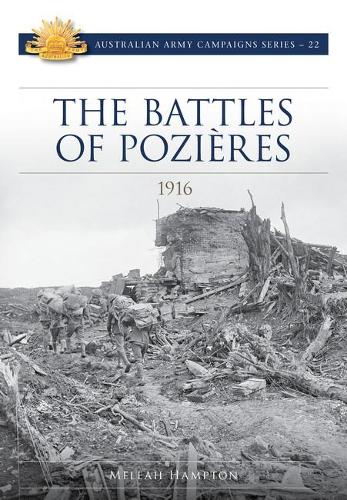
The Battle of Pozieres 1916
(Paperback)
Publishing Details
The Battle of Pozieres 1916
By (Author) Meleah Hampton
22
Big Sky Publishing
Big Sky Publishing
5th July 2018
Australia
Classifications
General
Non Fiction
940.4272
Physical Properties
Paperback
188
Description
The Battle of Pozires has reverberated throughout Australias military history, long regarded as a costly battle that produced little meaningful gain. Pozires was characterised by the most intense artillery bombardment the Australians had experienced in the war thus far and the hell that was Pozires became the yardstick by which subsequent bombardments were measured. The 13th Battalions Frank Massey described men who became blithering idiots Crying and weeping and absolutely useless as a fighting man. The object of the battle was Pozires Ridge, a low rise that offered a good view of the German positions. Heavily fortified, the ridge and the pulverised remains of the village were contested bitterly and, during its six-week campaign, 1st Anzac Corps advanced little more than two miles and suffered 23,000 casualties. Charles Bean wrote that Australian troops fell more thickly on this ridge than on any other battlefield of the war. However, the first phase of the campaign was very successful, securing the fortified ruins of Pozires and the German second line. But follow-up operations failed to capitalise and subsequent assaults merely nibbled away at enemy positions without making significant headway. Yet the Battle of Pozires marks a significant achievement not only for 1st Anzac Corps, but for the British Expeditionary Force. In a war in which any advance was hard won, the wresting of the high ground from the Germans was crucial. For the battered Allied forces, the capture of Pozires Ridge provided faint hope of an end to a catastrophic war.
Author Bio
Dr Meleah Hampton is an historian in the Military History Section, Australian War Memorial, where she has worked since March 2013. She is a graduate of the University of Adelaide and completed her PhD with a thesis on the 1916 battles for Pozires and Mouquet Farm. Her primary interest is in the operational conduct of the First World War on the Western Front. She is a member of the editorial staff of the Memorials magazine, Wartime, and continues to research and write biographies for the Last Post Ceremony project.
